
- The 1835 Great Fire of NY exposed firefighting limits.
- Early firefighting used bucket brigades.
- Frederick Graff invented the first hydrant in 1801.
- Birdsill Holly improved it with pressurized systems.
- Dry Barrel suits cold areas; Wet Barrel suits warm areas.
Fire Hydrant History is a story of lessons learned from losing lives and ruins. Let’s start with the catastrophe that burned a city into wreckage and paved a path for innovations in the field of firefighting.
A disaster struck New York City on the cold evening of 16th December 1835. It was a fire that broke out in a five-story warehouse and started spreading rapidly through the wooden buildings (Great Fire Of New York). When the firefighters ran to the scene and tried to access the water supply system, it was frozen. The East River, as well as the Hudson River, were frozen. There was no reliable source of water. The fire fuelled like anything and destroyed nearly 700 buildings. The entire New York City was in ruins.

Apply your imagination to set a date beyond December 1835 for the modern-day public firefighters. Were the fire hydrants truly a simple invention? Would they not qualify as some kind of revolutionary invention that changed firefighting forever? Well, it’s been around for centuries and has contributed to urban safety and fire suppression.
Before the invention of modern fire hydrants, cities survived on underground cisterns, water buckets, and primitive manual pumps, which, most times, proved to be nothing but a backward step resulting in disastrous losses. Today, fire hydrants are not simply street fixtures; they are the first line of defense for any firefighter so that there’s quick access to water in emergencies.
In this article, you will know:
How ancient civilizations used to battle against fire.
The first fire hydrant and people who contributed to public fire safety.
How fire hydrants evolved over time.
The different types of them and why some of them failed to make it through modern times.
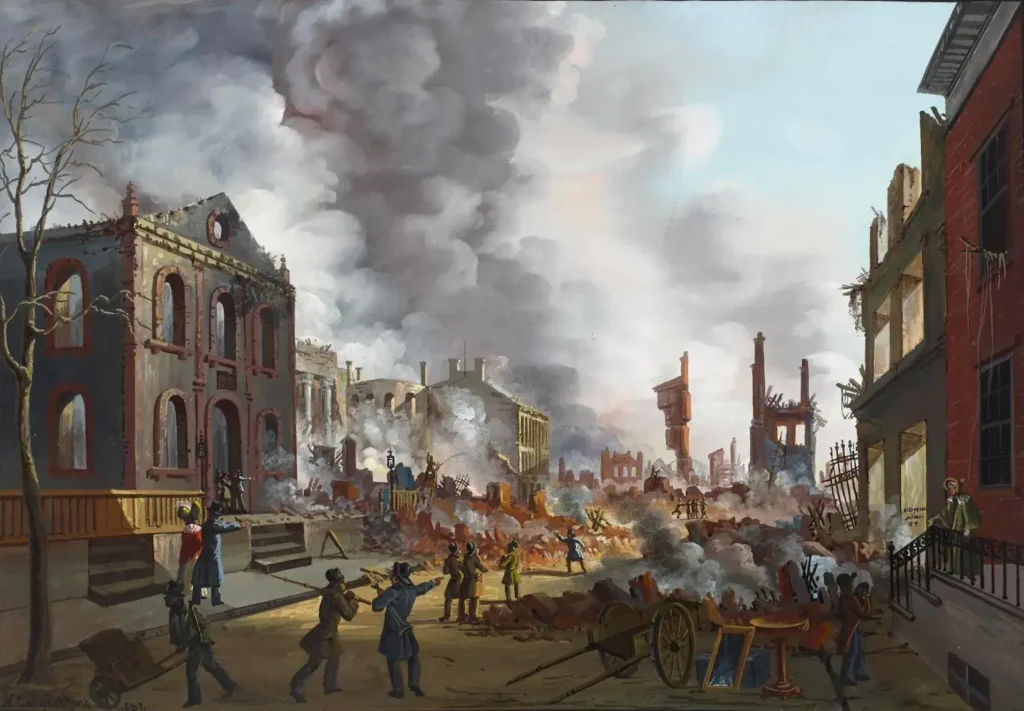
Table of Contents
Fire Hydrant History: Its Origin Story
We have all seen fire hydrants standing on the street corners. But have you wondered about the origins of them? If you google its roots, you will find the story of fire hydrants to be filled with mystery, lost patents, and some unexpected connections to historical figures.
Ancient Firefighting Methods
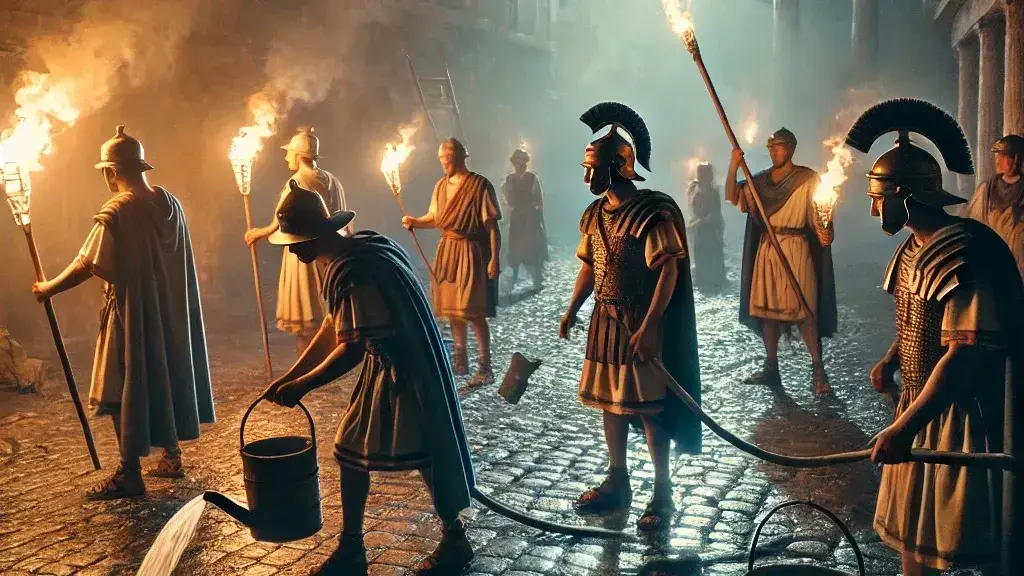
Long before modern times and techniques for fighting fires existed, civilizations like Ancient Rome, China, and Egypt had to use creative methods to extinguish flames.
Rome, for example, developed an intricate system of aqueducts for the distribution of water to public fountains so that citizens and the ‘Vigiles‘ (the Roman firefighters) could form bucket brigades to extinguish flames.
Likewise, in Ancient China, among the earliest firefighting techniques were the use of hand pumps and large ceramic water vessels, of which a number were strategically placed around cities.
All the same, such methods were slow and poor in efficiency and often in vain to stop whole neighborhoods from burning to the ground. As cities grew, the quick and dependable access to water became all the more pertinent.
The Fire Plugs
The earliest idea of a fire hydrant goes back to the 1600s when underground wooden pipes were installed under city streets for the purpose of transporting water. When a fire occurred, firefighters had to dig into the street, break the pipe, and access the water. Thus, it was termed a “fire plug.” After the fire was over, the hole would be plugged up with a wooden plug.
Fire Hydrants have evolved a lot from fire plugs to the first pillar fire hydrant over the centuries. Even though the fire hydrant history is quite fascinating, no one exactly knows who holds the first fire hydrant patent. There is a group of people who believe that it was lost in a fire that happened at the U.S. Patent Office in 1836, and another group believes that early designs were never recorded officially.
However, there are popular people like Frederick Graff, Thomas Jefferson, and Birdsill who have made great contributions to shaping the history of fire hydrants. Everyone has different stories, let us go more deeply into it.
Who Invented The First Fire Hydrant
Frederick Graff and Philadelphia Water Works Company
Frederick Graff joined the Philadelphia Water Works as chief engineer and patented the first modern pillar fire hydrant in 1801. This modern fire hydrant brought firemen underground access to water without digging the street.

Prior to this invention, firefighters stood and used to form a chain and pass buckets of water to the source of the fire. It was known as a bucket brigade. Wooden plugs were driven fairly deep into the water supply for drilling with a fire hose attached to them. It was like a wooden water main. In this manner, it was a manual system of combating fire emergencies, and thus, firefighting became a really time-consuming and inefficient process.
Graff’s earlier hydrant system comprised cast iron hydrants. These stood above the earth’s surface, were quite durable, and could withstand even the severest conditions. It helped to extinguish fires much more quickly.
Philadelphia essentially had some of the first private fire hydrants. It is the birthplace of American water infrastructure. With time, public fire hydrants became common and thus helped cities to build a more efficient fire protection network.
Thomas Jefferson
Even though Thomas didn’t invent fire plugs or the first pillar hydrant system, he helped in the development of the public water system, which led to the current fire protection infrastructure.

He tried to push for underground water mains even in cities such as Washington, D.C., which would supply water enough for both drinking and firefighting. Thus, early fire plugs and cast iron hydrants would have no water source without these systems.
Probably one of the most ambitious undertakings of Jefferson was to create self-sustaining water tanks for Monticello, his estate in Virginia. Although it was never fully implemented, the ideas contributed to future planners who might think of integrating water supply systems with fire safety features.
Birdsill Holly
The chief engineer of Philadelphia Water Works company might have laid the foundation for pillar fire hydrants, but it was Birdsill who really revolutionized fire protection systems. Holly was an inventive genius. He was passionate about water flow.
Morevover, he had 150 patents to his name. In the mid-1800s, he invented a hydrant system to deliver pressurized water whenever required, which helped firefighters deal with fire more efficiently and promptly.
Before Holly’s improvements, most cast-iron hydrants depended principally on gravity-fed water systems, which rarely exerted adequate pressure. Holly’s designs solved this with capable pipes that provided dependable and strong water mains whenever firefighters summoned them. Because of his hard work, Holly Water Works was founded. It supplied water to cities with modern hydrant technology and municipal water systems.
Holly also designed one of the earliest dry barrel systems. This was perfect in cold climates where standing water in hydrants may freeze. This system prevents the freezing of water.
Even today, his technologies are used in most modern fire hydrant systems, showing that some designs can withstand the test of time.
Many know that Holly paved the way for many inventions, yet his successor’s names often outshone him. Nevertheless, each time a firefighter ties down a hose on a modern hydrant, they do so under the genius inspiration of Birdsill.
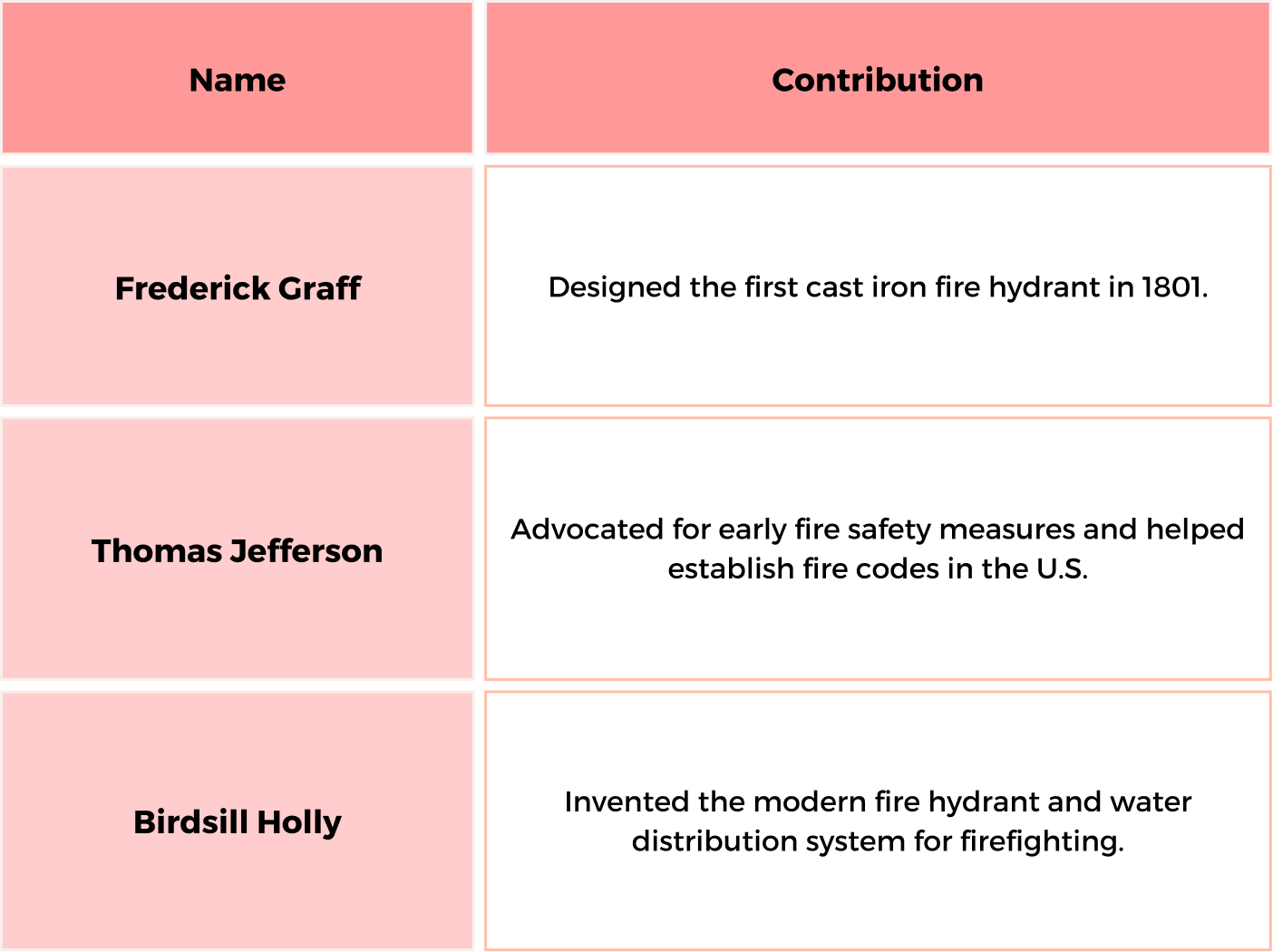
Evolution Of The Design Of Fire Hydrant System
City planners and other engineers had worked hard to evolve the fire hydrant into a more efficient and durable one.
Wooden Fire Hydrant System
Around 1600, cities started installing wooden water mains in the pre-drilled holes in order to distribute water. It can be considered as a wooden pipe that was buried under the ground. When the fire broke out, firefighters had to dig up a hole manually to access the water.
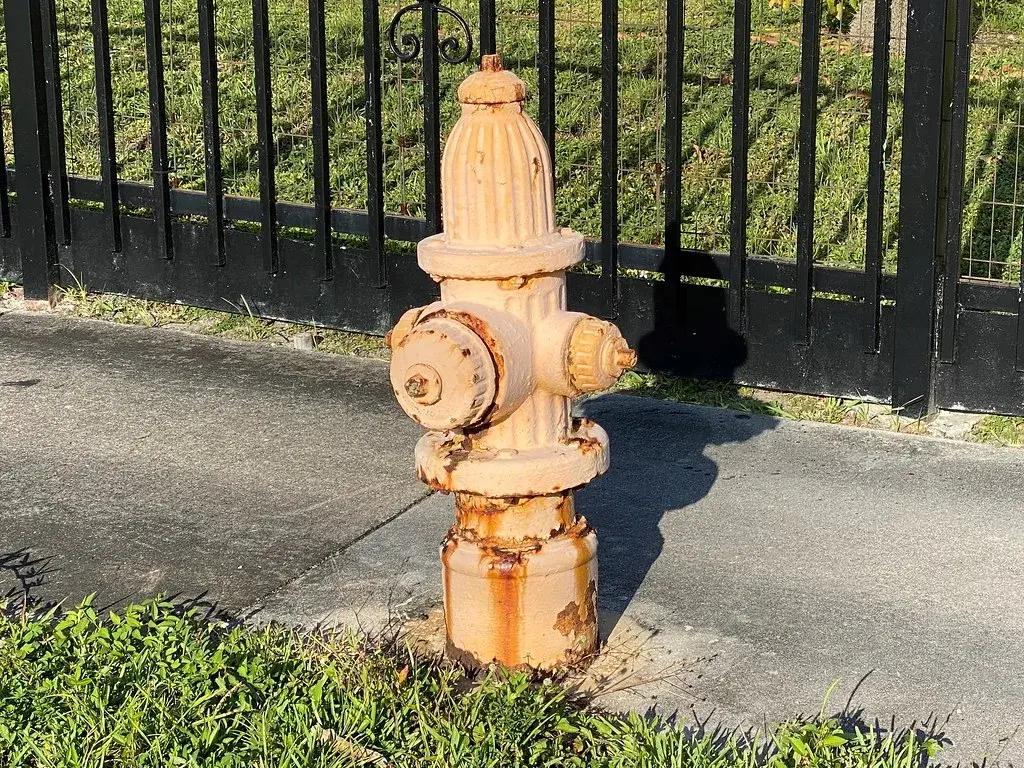
Some of the city planners introduced lead valves inside the wooden pipes so that firefighters could just remove the plug from the valve and use the water source. This came to be known as fire plugs. And when the fire was out, they used water hammers to put a wooden box in the hole.
Why Was It Replaced?
The wooden fire hydrant did not have a drain valve to drain excess water. During cold climates, the water inside the fire hydrant froze, so it became useless whenever a fire broke out.
Cast Iron Fire Hydrant System
In 1800, wooden fire hydrants were replaced with cast iron fire hydrants. They were more durable and sturdier. They have both lead valves and drain valves. It helped to control water flow and remove excess water.
A dry barrel system was also invented during this time. It solved the freezing problem.
There are two main types of cast iron fire hydrants. They are dry barrel systems and wet barrel hydrants. We are gonna discuss them in the next section.
You would be surprised to know that cannon makers crafted some of the early fire hydrants. It did make sense, as skilled metalworkers were needed to make durable and water-resistant fire hydrants.
The Different Types of Fire Hydrant
There are different types of fire hydrants for various climatic conditions. This important firefighting equipment is placed in cities based on climate, local infrastructure, and supply of water.
Let’s go through the fire hydrant history and find out how each hydrant was designed based on specific conditions.
Dry Barrel System
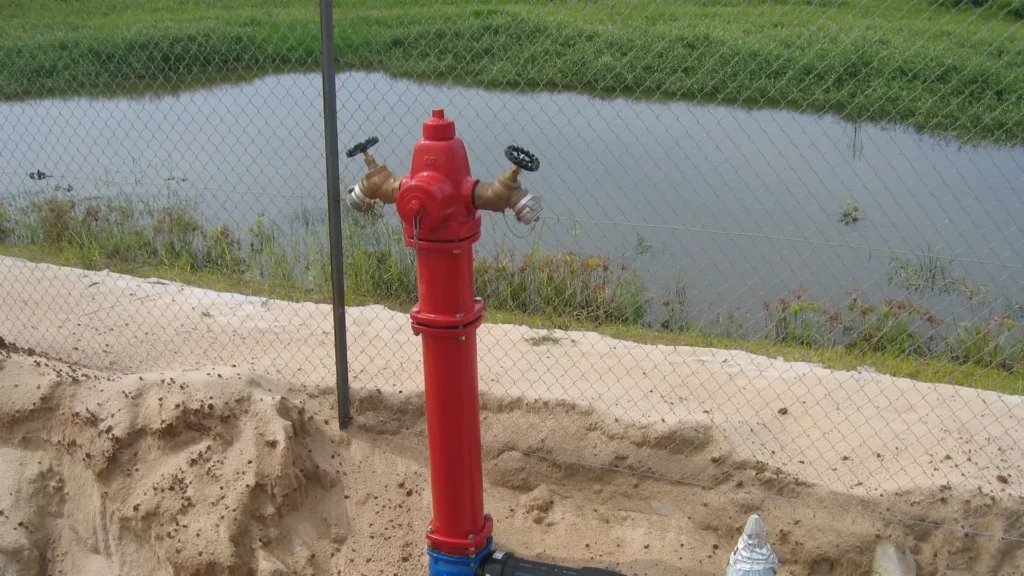
If you live in a region that turns the sidewalks into ice skating rinks during winter, you probably have witnessed a dry barrel system at work.
Unlike wet barrel hydrants, which keep stored water inside their barrels, dry barrel hydrants remain empty and are only filled with water when required.
The supply of water is kept underground to prevent freezing temperatures from harming it. Water only flows when the firefighter opens the main valve of the hydrant.
The distinguishing feature of a dry barrel hydrant is its drain valve, which automatically drains any residual water when the hydrant is turned off. This especially helps in preventing freezing, which could make the hydrant into a useless, ice-filled chunk of metal.
Wet Barrel System
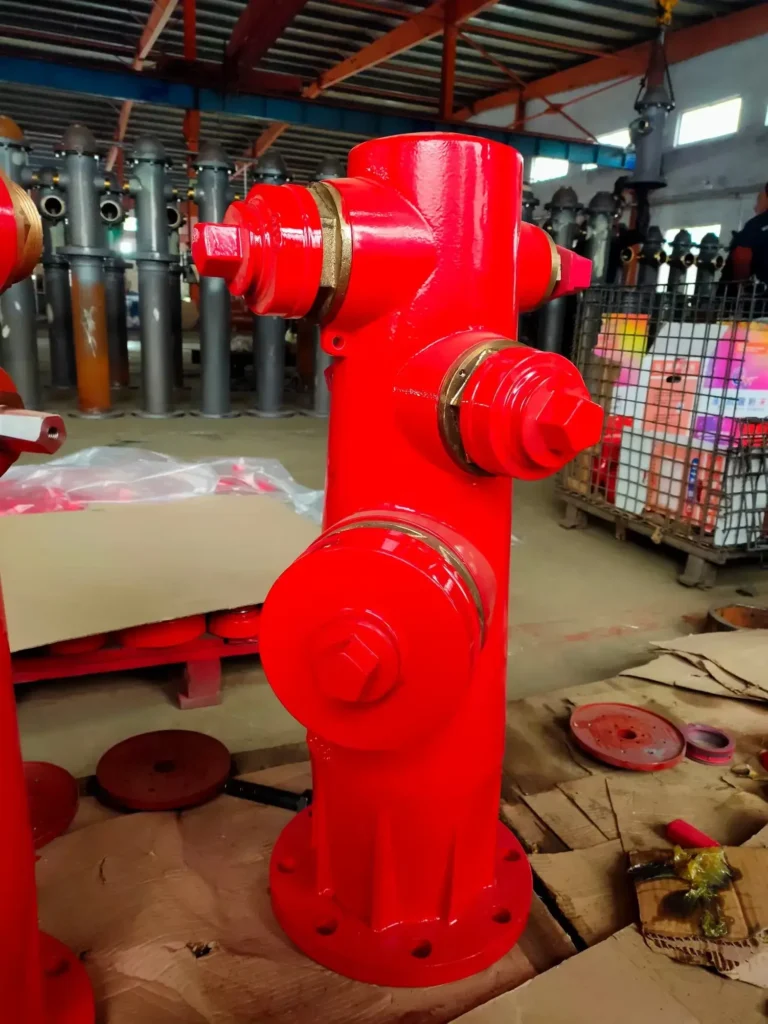
A wet barrel design would be the all-season tire of hydrants. This is because the wet barrel system is always full of water and ready to go at a moment’s notice. Unlike the system in the dry barrel, water in the barrel of “wet” hydrants-and there are no waits for water to rise from underground. The design makes these hydrants very suitable for places where temperatures are never above freezing.
There is one valve for each opening in a wet barrel hydrant, so firefighters do not need to turn off the entire system just to connect a hose to one point.
Such places usually include those always beaming with sunshine and not having problems with frozen pipes.
If your home is set in a tropical climate, most likely, the hydrants in your area make use of the same idea of having instant water access.
The Future Of Fire Hydrants
Public safety has evolved from ancient water buckets to modern high-pressure hydrants. Fire hydrants have been saving countless lives and entire cities over the years. They are a testament to human creativity and their relentless pursuit of safety.
Fire Hydrants are always nearby and have been serving us during moments of crisis, even though we may forget to value them sometimes. Regular maintenance and inspections are a crucial part of keeping hydrants reliable, especially when firefighters need them the most. It doesn’t matter if you are a property owner, a facility manager, or someone from the fire department; having a free fire hydrant functionality checklist is something that will help you ensure that the hydrants are in their optimal working condition, especially when an emergency strikes.
Get on a free demo with us to take fire safety management and automated hydrant inspections to the next level.

Get Insights Delivered Straight
To Your Inbox!
Related Reading
Why Your Field Software Management Software Needs QuickBooks Integration
ZenTrades Why Your Field Service Management Software Needs QuickBooks Integration Read More Request Demo...
Read MoreZenTrades How To Manage Electrical Service Agreements Like...
Read MoreZenTrades The Best 5 Jobber Alternatives In 2023...
Read More

